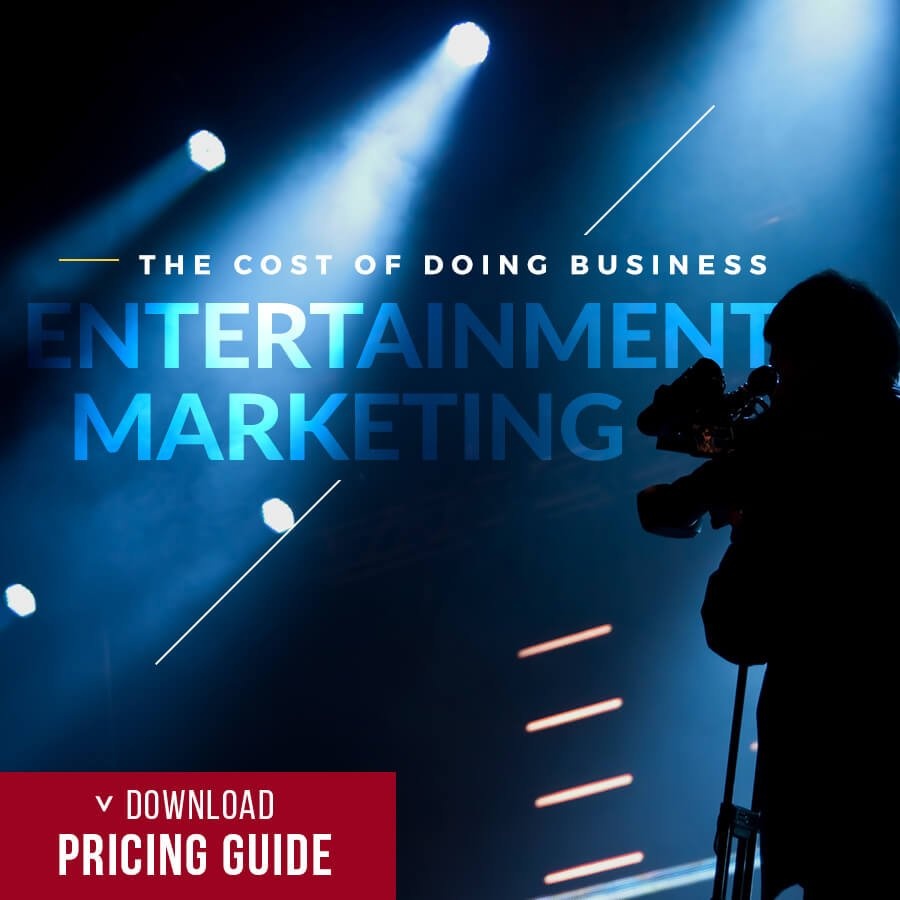Marvel’s Top-Grossing Recipe
Table Of Contents
Forget Candy, Marvel Studios Proves That Easter Eggs Are Better Filled With Money
In order to cater to the loyal Marvel fans, Marvel Studios films are filled with Easter eggs that refer to other films in the franchise and close with an after-credits scene that usually introduces a conflict that will be important in a subsequent film. These elements have become the distinctive trademark of the Marvel Cinematic Universe films.
These films are greatly anticipated and have created the practice of staying in the theater all the way until the lights come up because, for those in the know, extra scenes during or after the credits can offer crucial information about the events seen in that film or a preceding or succeeding one. Marvel Studios has a great grasp on how to effectively engage with their fans that have stuck with them since the comic book days while simultaneously filling theater seats with young people now. In this blog, Hollywood Branded discusses the overwhelming grossing successes of Marvel Studios films.

A Universe of Money Making Opportunities
Every filmmaker has differing goals when they begin to develop their next film, but to at least some extent, every filmmaker wants and needs their film to make money. In 2019, Marvel Studios made history when it pushed James Cameron’s Avatar out of the top spot with Avengers: Endgame (however, Avatar has since had a re-release in China, which has put it back on top!). Then, Marvel held three spots in the top ten, with Avengers: Endgame even pushing another Marvel Cinematic Universe (MCU) film, Avengers: Age of Ultron, out of the top ten.
How does Marvel Studios manage to have such consistent success? They indeed use the old-fashioned blockbuster formula, but they have also added in their own flair. A blockbuster film is one that when released, impacts everything in its vicinity, much like a bomb. According to writer Charles R. Acland, the term “blockbuster” comes from the name of large-scale bombs in use during World War II. Avengers: Endgame certainly did just that; it hit the industry like a bomb, with many other Marvel Studios films laying the groundwork. Marvel’s recipe has perfected the ability of catering to new and old fans through its iconic Easter Eggs and post-credit scenes that are all tied together by the studio’s modular system.

Giving Back To The OG Fans
Since Marvel Studios had the ability to utilize comic books as a source for characters and storylines, they also were able to acquire fans involved in that world to become one of the primary audiences for the films. After the Marvel comics’ success, they took advantage of the opportunity and created new content. This led to a long list of auxiliary products that includes television programming, books, merchandise, and, of course, the films. By 2005, Marvel had earned twelve billion dollars from these products based on the original comic book stories. As time has gone on and culture has developed, comic books, themselves, have had quite a decline in popularity. However, as Bart Beaty discusses, “superhero comic books have become the source material for more lucrative media forms.” This is important because it illustrates that Marvel has been receptive to how society, specifically their target audience, wishes to consume their content. Beaty says that although the decline in comic book sales can be attributed to several variables, he believes that the most significant reason is that “the ever-increasing complexification of superhero storytelling has narrowed the audience to only the most committed readers.” Where the comic books may fall a little short, they have fixed this issue in their films.
It seems that Marvel detected that their content was failing to include casual readers and that this concept became a crucial plan of attack when the company took to the big screen. While the films certainly have made the Marvel superheroes more mainstream (and thus accessible to many more consumers), Marvel Studios has undoubtedly prioritized the fans that have actively engaged with the brand since the comic books. An article within the Harvard Business Review believes that these elements are part of Marvel’s profound formula of “blending continuity and renewal.” In this case, they remain loyal to the original readers while renewing their target audience’s makeup. They must maintain this balance to properly preserve their relationships with new and existing audiences. Their ability to do so is a massive part of why their success has managed to be so consistent.

Easter Eggs Are No Longer Just Gifts From The Easter Bunny
In order to cater to the loyal Marvel fans, the films are filled with Easter eggs that refer to other films in the franchise and even close with an after-credits scene that usually introduces a conflict that will be important in a subsequent film. These elements have become the distinctive trademark of the MCU films. They are greatly anticipated and have created the practice of staying in the theater all the way until the lights come up because, for those in the know, extra scenes during or after the credits can offer crucial information about the events seen in that film or in a preceding or succeeding one.
Further than these elements being treats for the fans, they serve as an innovative marketing tool. In this way, “Marvel systematically builds anticipation for its coming films by putting ‘Easter eggs’ in its current releases that suggest a future product without giving away the story.” This method is excellent as it begins to subconsciously push identified Marvel audiences (since to be receiving such messaging, they must be watching a Marvel film) to see the next film when it is released. They introduce new relationships between characters, give insight into conflicts, or simply create suspense or offer humor. The plain fact that these have become uniquely attributed to the Marvel brand challenges other studios to have their own specialty element. The post-credit scenes are also an excellent catalyst for social media conversation leading up to upcoming films and are widely discussed amongst Marvel fan circles.
Marvel's Secret Sauce: The Modular System
The strongest and most effective method that Marvel Studios utilizes is its modular system. It has proven to work exceptionally well in making the franchise accessible and favorable to both new and existing audiences. This is referred to as the “insider/outsider relationship.” Marvel does not have to pick one or the other to be their target audience. With the modular system, they can cater to both by providing for the needs of both groups.
The very structure of the franchise, that is the way that all of the films interconnect, is exceptionally strategic in allowing portions of the franchise to be “emphasized and deemphasized as circumstances warrant.” This means that an audience member can choose to watch the Iron Man and Captain America MCU films, but entirely skip over the Guardians of the Galaxy. They can personalize their experience with the MCU according to their interests in characters, subjects, actors, etc. This is most crucial for casual viewers who may not be motivated to spend the time and money to see every movie.
This gives viewers the ability to join the fanbase at any time, which means that the fanbase can grow quickly. The casual fans can still understand their individual movies without them being in the entire MCU context. This makes the MCU not exclusive to only the most dedicated audiences. However, the system still allows the most involved fans to have an even more meaningful experience in watching every film in the franchise as all of the films do intertwine with one another.
The modular system is helpful to Marvel in another way. It allows them to take risks in their storytelling without harming the entire franchise. With the modular system in place, Beaty discusses how Marvel Studios took the significant risk of making a film following the Guardians of the Galaxy. The Guardians of the Galaxy were not popular characters in the comics, so the studio had fears about how the film would perform at the box office today. With the addition of an 80s centric soundtrack and likable stars like Chris Pratt and Bradley Cooper, the film became extremely successful. Of course, this was a lucky victory, but the characters and storylines would simply be discontinued and not featured in the following MCU films if it had not been a success. Though, since it was, they had the opportunity to make a sequel and bring the Guardians of the Galaxy into subsequent MCU films. The modular system also lowers the stakes of external conflict. From the time of Marvel Studios’ conception, Marvel and Sony have had so-called “custody battles” for the rights to Spiderman. Marvel always must fear that Sony can pull out of this shared-rights agreement, so the modular system provides insurance for if this were to happen, similar to the fallout in late 2019. Marvel’s modular system has been successful in so many situations as it offers an ability for easy solutions that do not put the entire franchise in jeopardy.
Where Will Marvel Studios Go From Here?
Marvel Studios is an excellent example of a production company that has found a way to truly dictate how the industry perceives one of the biggest genres of all-time: superhero films. Their movies are widely anticipated, and they all find massive success at the box office. The tactics they use are probably all familiar to you, though it is important to actually identify the tangible effects of these elements. Now recognizing all of these distinct efforts that Marvel makes to be so successful, how can they continue to stay ahead of the rest of the pack?
Check out more blogs by Hollywood Branded that delve into the world of top-grossing franchise films and how they affect our world as entertainment marketers.
- Movies Are A Brand Marketer's Best Friend - Box Office Is Growing
- How Much Do Movies Make In Hollywood?
- Franchise Fatigue: Hollywood’s Newest ‘F’ Word
- Marvel: A Universe Of Product Placement Opportunities
- Transmedia Storytelling As A Marketing Tactic
The wide world of entertainment marketing is always growing and changing. Learn about the general cost of entertainment marketing with our pricing guide, available below!








